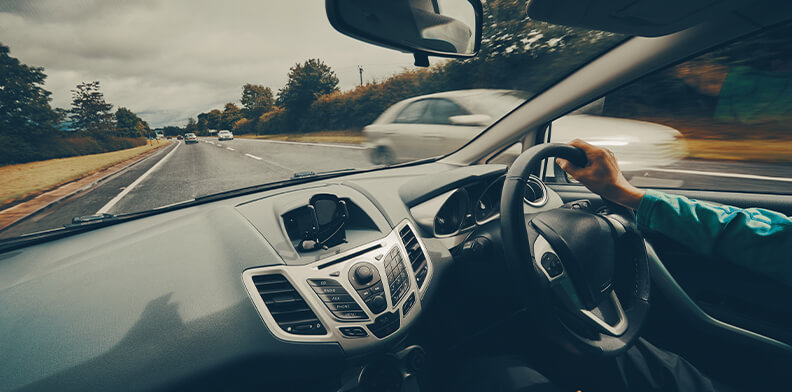Driving hazards and how to deal with them
What is a driving hazard?
A driving hazard is anything that would cause you to change the speed or direction of your vehicle. Not doing so may present potential or actual danger to you and others around you. Being aware and conscious of your surroundings, the weather, and other road users is of key importance to your road safety and the maintenance of your vehicle.
- Permanent hazards: Bends, junctions, blind summits, bridges, other road features.
- Semi-permanent hazards: Stationary vehicles, broken down vehicles, road works.
- Moving hazards: Other vehicles, pedestrians, cyclists, animals.
- Surface hazards: Weather conditions (particularly in winter), mud or oil, damaged road surfaces.
How do we deal with a driving hazard?
You will have taken your Hazard Perception Test as part of Theory Test, and you can take free online versions to refresh yourself. In real life, the safest and easiest way to remember to check your surroundings is the MSM Routine.

MSM Routine – (Mirror, Signal, Manoeuvre)
You must use the MSM routine on your approach to every driving hazard.
- MIRRORS: Check your wing mirrors and rear-view mirror regularly. Effective observation means you can check the position and speed of traffic behind.
- SIGNAL: Always signal where you are going and in plenty of time for other road users to see and manoeuvre accordingly.
- MANOUVRE:
- Position: Take time to position yourself correctly, accurately, in good time.
- Speed: Change speed as necessary to be safe (acceleration, deceleration, footbrake)
- Gears: Match the gear to the speed of the car if necessary, for best control of your vehicle
- Look: Plan well ahead and act early on what you see (look, assess, decide, act)
You may not always need to do every part of this routine at every hazard, but you must go through it every time, and only miss out what is not required at any given situation. This is where your hazard perception training will come in very handy to help you know what’s needed.

What is Defensive Driving?
Defensive Driving means driving in such a way as to put safety above all else. To do this, you must develop excellent awareness of what is going on around you, very good anticipation and planning skills.
- Always think safety first, for every journey
- Pay attention and be aware of your surroundings
- Rely on yourself, do not depend on other drivers
- Follow the 2 second rule
- Keep below the speed limit, the limit is the fastest you can go, not the given mph
- Know your escape route and driving plan
- Separate risks
- Cut out distractions, using your mobile phone is not only illegal, but extremely dangerous and you will not be concentrating on what you are doing.
Finally, attitude is a huge part of driving effectively. You may be the most skilful driver in the country, but with a poor attitude and disregard for safety, you simply will not use those skills. Responsibility, consideration for others, patience and not driving in a way as to cause offence or a hostile response in others are all part of driving in a defensive manner and dealing with driving hazards effectively.
We are specialists in all areas of driver tutoring, and we can help you to develop and retain these essential skills to pass your test and improve your driving overall.





